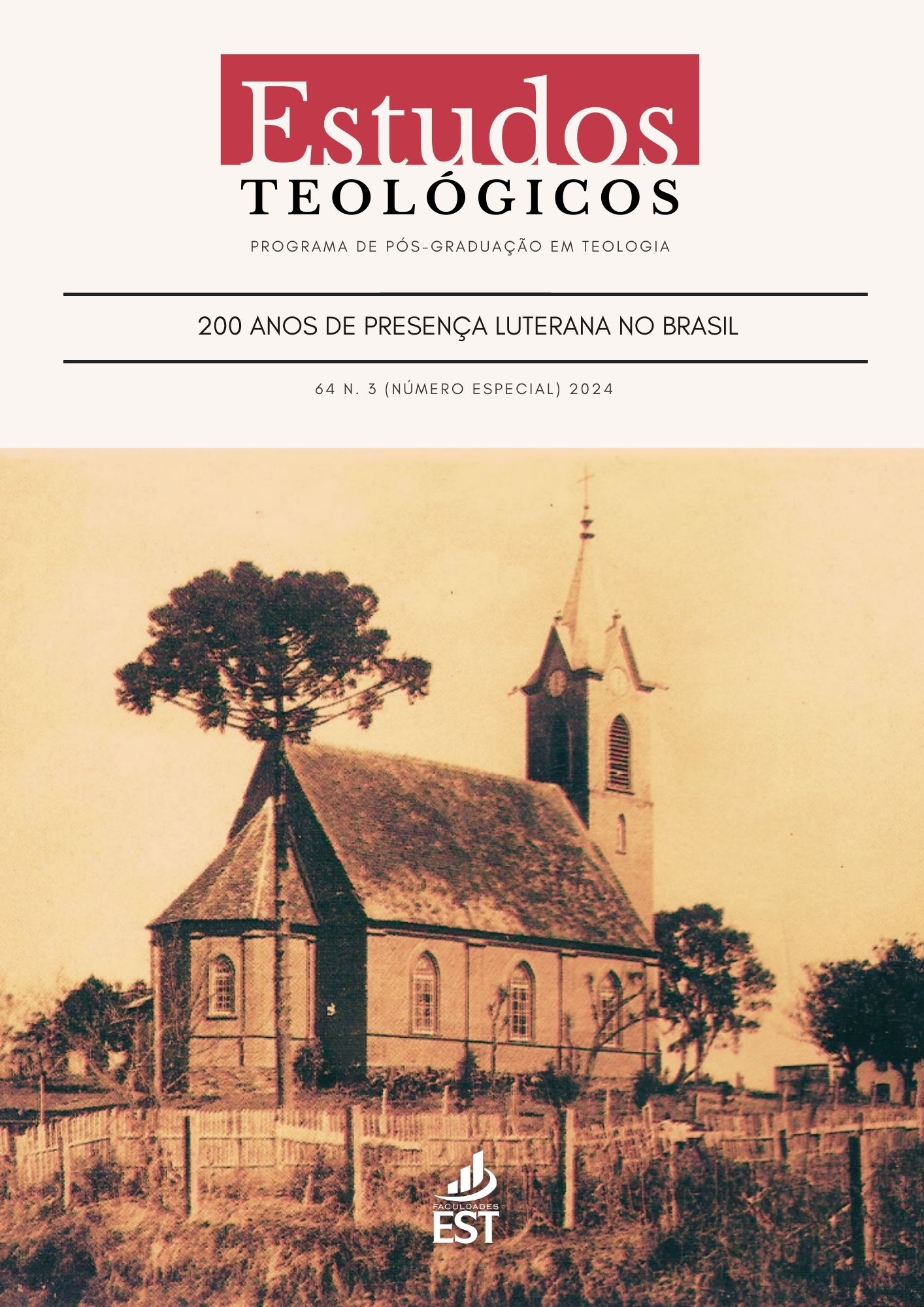Brazilian Lutheranism
reflections on paths and crossroads... two centuries in four times
DOI:
https://doi.org/10.22351/et.v64i3.3041Keywords:
Lutheranism, missionaries, pastors, GermanismAbstract
The year 1899 marked the history of what, once organized nationally, would become the current Evangelical Church of Lutheran Confession in Brazil (IECLB). That year, a meeting was held between the Evangelical Society for German Protestants in America (SEAPA) and the Superior Ecclesiastical Council of Berlin (CSEB), of the Church of Prussia, which decided to transfer the coordination of sending pastors to Brazil from the former to the latter. Our thesis is that, from that point on, the history of Lutheranism in Brazil was divided between “before and after” (19th and 20th centuries). These two centuries of history also present different times: In the 19th century, during the congregational period, we found few pastors, who came on their own initiative or were sent by some institution, followed by the systematic sending of pastors, mostly graduates of theological seminaries, especially on the initiative of missionary societies. The 20th century, amidst growing Germanism, began with the sending of pastors mostly with university degrees until the Second World War, when, with the founding of the School of Theology (1946) in São Leopoldo/RS, the ministerial body increasingly began to be made up of native ministers. The objective of this article is to characterize and analyze the four periods in these two centuries of history of Lutheranism in the IECLB.
Downloads
Published
How to Cite
Conference Proceedings Volume
Section
License
Política de Acesso Livre
A Revista Estudos Teológicos é de acesso livre, o que significa que todo o conteúdo está disponível gratuitamente, sem custos para o usuário ou sua instituição. Os leitores podem ler, baixar, copiar, distribuir, imprimir e compartilhar os links para os textos completos dos artigos, desde que com a devida atribuição de autoria e fonte original, conforme a licença abaixo.
LICENÇA CREATIVE COMMONS
Esta obra está licenciada sob uma Licença Creative Commons Atribuição-NãoComercial 4.0 Internacional (CC BY-NC 4.0).












